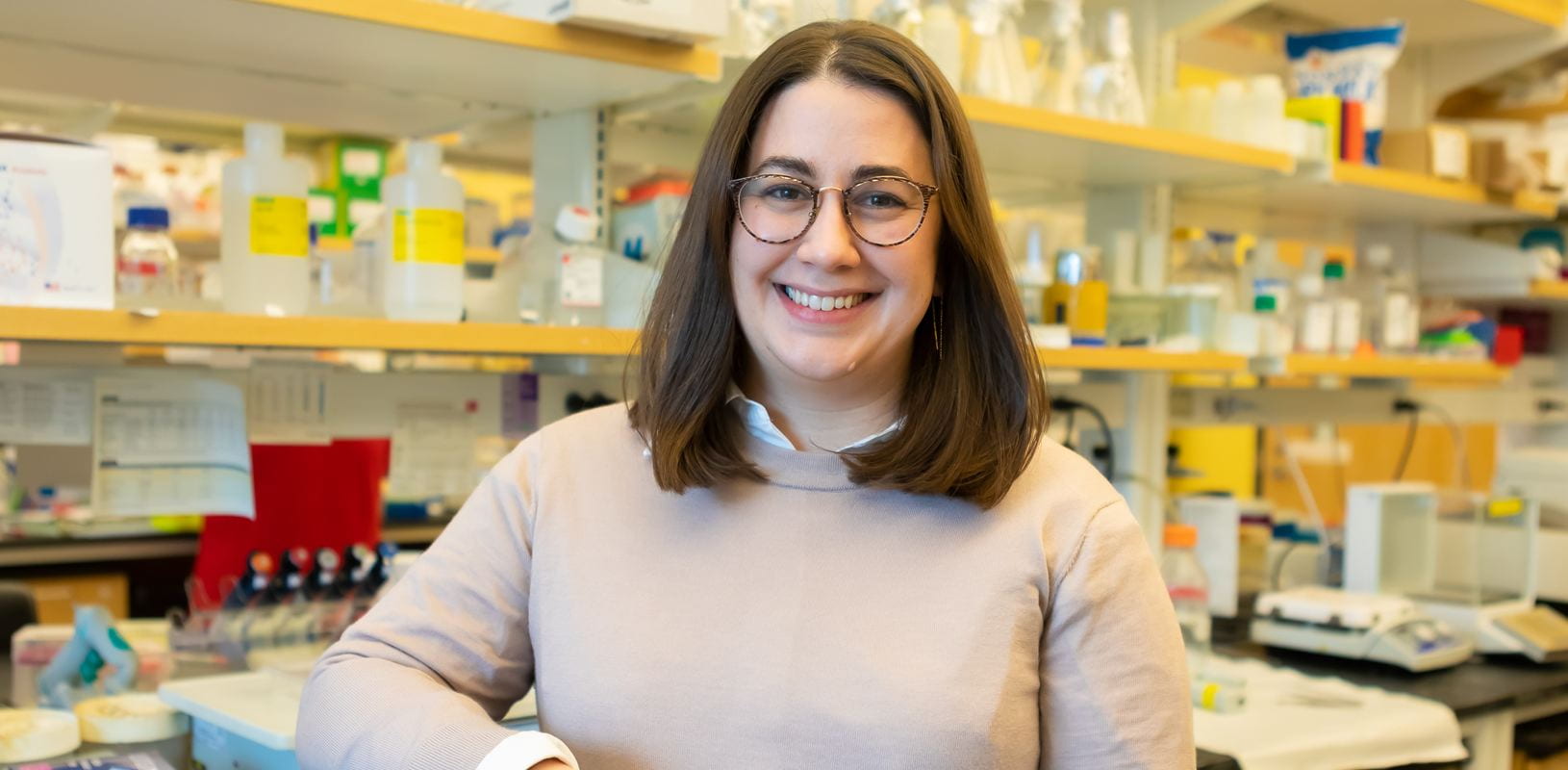Education & Training
The search for a therapeutic target for high-risk neuroblastoma

Resident Monica Pomaville, MD, working in the lab of Chuan He, John T. Wilson Distinguished Service Professor in Chemistry
About half of children with neuroblastoma, the most common malignancy in infants, have high-risk disease — and only a 50 percent chance of survival. Monica Pomaville, MD, a third-year pediatric resident at the University of Chicago Medicine Comer Children’s Hospital, was drawn to children with this devastating cancer, not only as a physician but as a scientist. During the last year of her residency, which has been devoted to research, she has been attempting to discover what drives the aggressive form of the neuroendocrine tumor and what therapy might inhibit its growth.
“I specifically came to the University of Chicago to work in Chuan He’s lab, which is literally inventing the sequencing methods to study modifications to RNA that regulate gene expression and tumor growth, a very new concept,” said Pomaville. “And at Comer, I have the opportunity to be mentored by the leading expert on neuroblastoma, Dr. Susan Cohn, who is providing translational human relevance to my research.”
Most children with high-risk neuroblastoma don’t have genomic mutations that might explain their aggressive disease. “Many childhood tumors are believed to be caused by aberrant developmental processes, and neuroblastoma seems to be driven by epigenetic mechanisms,” said Pomaville. Could RNA modifications be regulating the expression of genes in high-risk neuroblastoma, she asked. Specifically, she wanted to discover whether depleting the gene METTL3, which is highly expressed in neuroblastoma cells compared to non-cancerous tissue, could slow tumor growth.
Pomaville began her research with a panel of neuroblastoma cell lines. She showed that METTL3 is highly expressed in a subset of neuroblastoma cells, but hardly at all in other neuroblastoma cells. When she knocked down the METTL3 gene, the cells became less viable. She also found that the cell phenotype drastically changed. “Cells without METTL3 looked very different from control cells,” she said. They developed neurite outgrowths and appeared to be differentiating into neurons, eventually leading to cell death. Neuroblastoma cells seem to be dependent on METTL3 to proliferate and maintain their undifferentiated or abnormal cancerous state, explained Pomaville.
As luck would have it, the first inhibitor to METTL3 was developed in the UK as Pomaville was conducting her research. A chemist at the University of Chicago was able to make the compound for her based on the formulation the UK researchers published.

Monica Pomaville, MD, is in her third year of residency at Comer Children’s.
Then she tested the inhibitor in mice with neuroblastoma xenografts. Nearly all the control animals that were not treated with the drug grew large tumors. But in the mice treated with the inhibitor, the tumors remained small with seemingly no toxicity to the animals.
Next, Pomaville will do studies to understand the mechanism underlying the ability for METTL3 inhibition to slow tumor growth in neuroblastoma. “It’s very exciting to be one step closer to finding an effective treatment for kids with high-risk disease,” she said.
